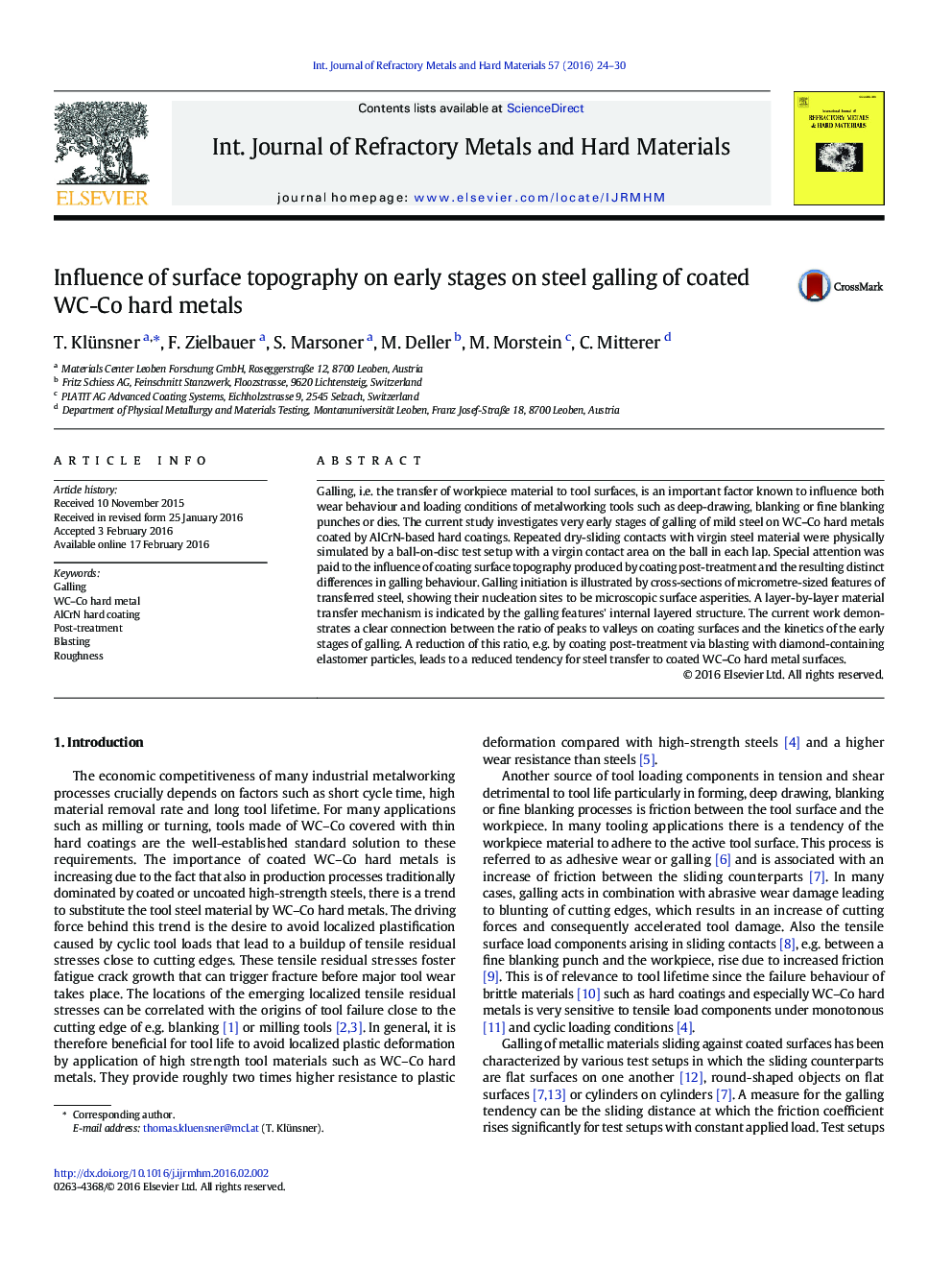| Article ID | Journal | Published Year | Pages | File Type |
|---|---|---|---|---|
| 1602811 | International Journal of Refractory Metals and Hard Materials | 2016 | 7 Pages |
Abstract
Galling, i.e. the transfer of workpiece material to tool surfaces, is an important factor known to influence both wear behaviour and loading conditions of metalworking tools such as deep-drawing, blanking or fine blanking punches or dies. The current study investigates very early stages of galling of mild steel on WC-Co hard metals coated by AlCrN-based hard coatings. Repeated dry-sliding contacts with virgin steel material were physically simulated by a ball-on-disc test setup with a virgin contact area on the ball in each lap. Special attention was paid to the influence of coating surface topography produced by coating post-treatment and the resulting distinct differences in galling behaviour. Galling initiation is illustrated by cross-sections of micrometre-sized features of transferred steel, showing their nucleation sites to be microscopic surface asperities. A layer-by-layer material transfer mechanism is indicated by the galling features' internal layered structure. The current work demonstrates a clear connection between the ratio of peaks to valleys on coating surfaces and the kinetics of the early stages of galling. A reduction of this ratio, e.g. by coating post-treatment via blasting with diamond-containing elastomer particles, leads to a reduced tendency for steel transfer to coated WC-Co hard metal surfaces.
Related Topics
Physical Sciences and Engineering
Materials Science
Metals and Alloys
Authors
T. Klünsner, F. Zielbauer, S. Marsoner, M. Deller, M. Morstein, C. Mitterer,
